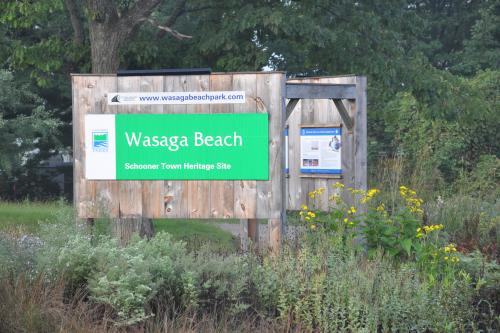Schooner Town
After the capture of the American vessels the Tigress and Scorpion in September 1814, Lt. Worsley and his crew constructed their winter quarters four miles from the mouth of the Nottawasaga River. Plans to build a naval base at Penetanguishene were abandoned with the end of the War of 1812.
By the summer of 1815, the quarters at Schooner Town had burned down. In September, Lt. Wingfield, who had taken command of the Scorpion (renamed Confiance), left three of his men to erect new buildings.
Meanwhile, in October 1815, Commodore Sir Edward Owen decided on Schooner Town as the site for a “temporary naval establishment on Lake Huron” and Captain P.S. Hambly was appointed the Commanding officer. This establishment was meant to repair and maintain vessels, construct bateaux to carry provisions, and to help guard the commissary stores at the mouth of the river. In his instructions Capt. Hambly was authorized to:
“Cause such houts as are absolutely necessary for the comfort of the officers and the men and preservation of the stores to be erected at Nottawasaga but considering this a temporary arrangement only he is to avoid incurring unnecessary expense there in.”
Lt. Wingfield returned from Drummond Island in November to find his buildings taken over and his own house converted into a storeroom. Consequently further construction was necessary.
Lt. Wingfield wrote that:
“One summer was sufficient to convince us that this was not the most eligible situation for a naval Establishment.”

An unsheltered bay for vessels, strong winds, a shifting sand bar and lack of suitable dockyard and storeroom facilities led Sir E. Owen to recommend transfer of Schooner Town to Penetanguishene in July 1816. Implementation of this decision was delayed as the road to Penetanguishene was rough and very swampy. Signing of the Rush-Bagot agreement in April 1817 led to the disbanding of the Naval Squadron on Lake Huron and by July first the entire squadron was paid off and laid up at Penetanguishene. Thus, Schooner Town was abandoned.
Schooner Town is now preserved with the Schooner Town parkette.
